47 Camino de Santiago Tips From a 3x Pilgrim (2025)
Are you feeling stressed and worried about your first Camino de Santiago? I get it, I've been there too. Heck, even before my second Camino, I found myself still feeling a little bit worried beforehand.
It's normal to feel a little overwhelmed, especially if you've never done something like this before. From preparing for the Camino to packing, health, and more, there's a lot to figure out, but I've got you covered!
I've now hiked the Camino de Santiago three times. I hiked the full Camino Francés in 2023 and then walked the Central and Coastal Camino Portugués routes in 2025.
These tips are all taken from my own experience on this epic pilgrimage. I've learned so much along the way, making mistakes of my own and also learning from others who have hiked the Camino multiple times.
Keep reading for a comprehensive list of my top Camino de Santiago tips to help you feel confident for your journey. These tips will help you pack the right things, deal with blisters if they arise, understand when to book accommodations in advance, and more.
Preparing for the Camino de Santiago
There's A LOT to prepare in advance for your journey, so here are my Camino de Santiago tips and recommendations to help.

1. Research the different Camino routes.
The Camino de Santiago is not just one route. There are many different routes of varying lengths and difficulties. You'll want to research them and think about what works best for you.
As you look into different routes, my advice is to consider your activity levels and athletic ability as well as the amount of time you have for the hike and what you want to get out of the experience.
I first hiked the Camino Francés (aka the French Way), which is the most popular route. I hiked the full length of it, starting in Saint-Jean-Pied-de-Port, France in June 2023. That takes around a month, so some people who hike the Francés who have less time start in Sarria, which takes about a week.
The Camino Portugués routes are the next most popular, with many people starting in Porto and hiking for about two weeks. I hiked both the Portugués Central and Coastal routes in May 2025.
Personally, I'd like to hike the Camino Norte along the northern coast of Spain, but that one is said to have the most challenging terrain and takes about 5 weeks.

2. Consider the best time to hike the Camino de Santiago.
You'll want to think carefully about when to hike the Camino de Santiago. Think about weather and crowds and take that into account as you plan.
In the winter months, many albergues where pilgrims stay will be closed. Some mountain passes may shut down as well depending on the weather. If you hike in winter, be sure to do extensive research beforehand.
I personally hiked in June along the Camino Francés and found it to be the perfect time. Weather was ideal, although a bit warm towards the end. The trail was busy then, but I didn't have to worry too much about finding a bed until I got to Sarria.
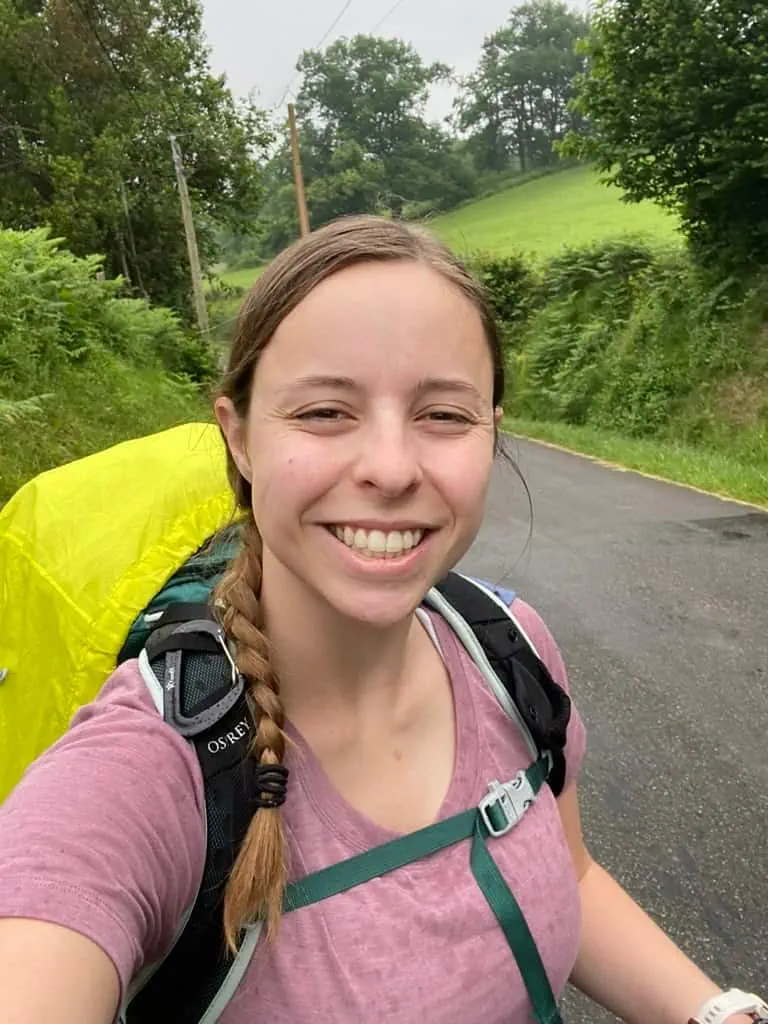
3. Train for the Camino in advance.
Nothing will quite prepare your body to walk day after day on the Camino de Santiago, but anything you can do to try to walk as much as possible beforehand will help.
I quickly found myself surprised at how tired and in pain my body felt after only a few days on the trail. I consider myself to be a fairly fit person, but I probably didn't train as much as I should have.
My advice is to slowly ramp up your mileage to at least 3-6 miles (5-10 km) of walking per day before you go on the Camino if you can. Try to do one or two longer walks per week as well if possible–around 6-12 miles (10-20 km).
As you train, work up to wearing your backpack with weight in it and try out your hiking shoes as well. This will help ensure your body is used to hiking with this gear and that everything is properly broken in.
Connect with Other Women Hiking the Camino
Join my free Facebook group! We're building up a community of women who have hiked or are planning to hike the Camino there. You can also get personalized support from me!

4. Prepare a tentative walk plan beforehand.
While you should keep your plans flexible, it's helpful to prepare a tentative walk plan ahead of time. That way you have a general idea of how long it will take you and how far to walk each day.
I went into my hike with a tentative plan in place and adjusted it a bit as I went and made friends who knew about cool albergues and towns to stay in.
⬇️ Here are my itineraries I used for my hikes on the Camino Francés and both Portugués routes. If I hike these routes again, I would likely do something similar.

5. Figure out how you’re going to do laundry on the Camino.
Since you carry everything on your back with you during the Camino de Santiago, you will likely only have a couple of hiking outfits. That means you need to figure out how you're going to do laundry along the way.
While some places will have washing machines, not all will. Most pilgrims hand wash their laundry because even with a washing machine, it's usually easier and definitely cheaper to hand wash your clothes.
I figured out a method for doing laundry on the Camino that worked well for me and recommend you spend some time thinking about this yourself. As you think through this, make sure to have a backup plan in place in case it's gray and rainy and your clothes don't dry before the next day.
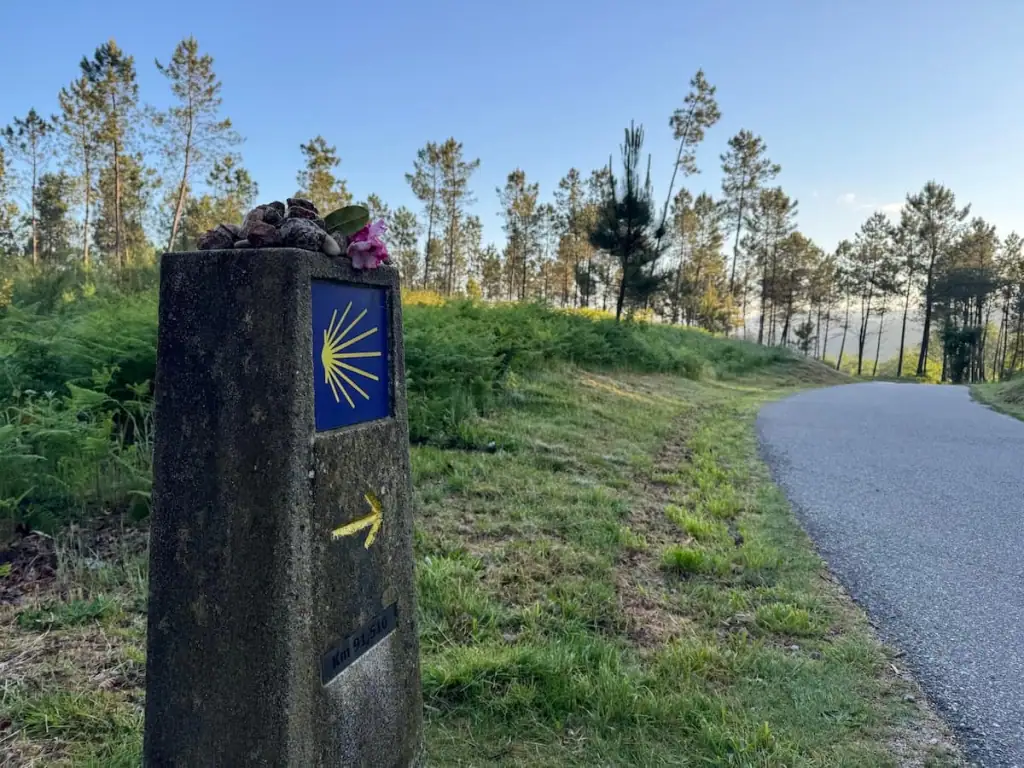
6. Learn some key Spanish (and Portuguese) phrases.
Make sure you learn at least a few key Spanish phrases before you go. If you're hiking a Portuguese route, you'll want to learn a little bit of Portuguese too if possible.
While you can absolutely get by on the Camino without knowing the local language, it helps to know some words. Plus, locals will appreciate it.
In my experience, plenty of locals along the Camino Francés didn't know English. I'm not a good person to speak to this though since I have pretty advanced Spanish. That said, most of my friends I made along the way didn't know much Spanish, and they got by ok.
On the Portugués routes, it was easy enough to get by without knowing much Portuguese, but I did interact with folks in cafes all along the way who didn't know English or Spanish. I was glad I knew at least some of the basics.
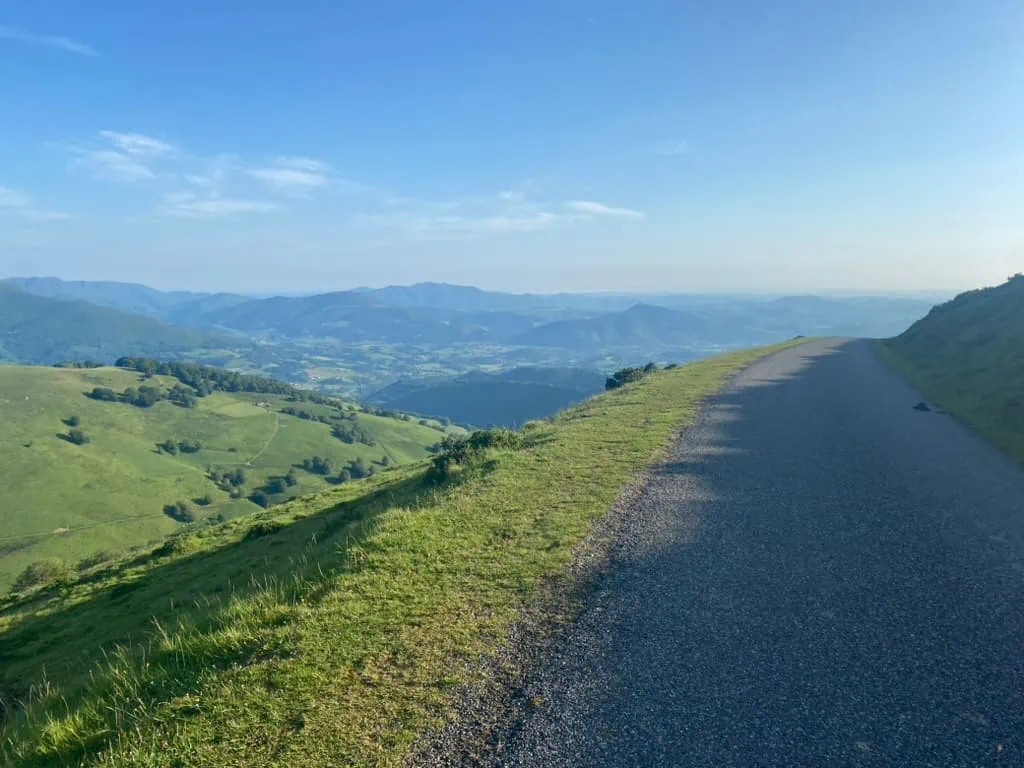
7. Download Spanish (and Portuguese) on your Google translate app.
For those times when you're struggling with the language barrier, you'll want to have Google Translate on hand to help. Download the app and then make sure you have Spanish (and Portuguese if applicable) downloaded offline so you can use it even if you don't have cell service.
8. Download a Camino app on your phone.
While the Camino de Santiago tends to be fairly well marked, I definitely found myself getting confused trying to follow the trail markers at times. Some areas are marked really well, but then other areas may not have trail markers very frequently.
My advice is to download a Camino app so you can look at a map in these scenarios and ensure you're staying on trail. These apps will also help you get a sense of accommodations and restaurants along the way.
Check out the Wise Pilgrim and Buen Camino apps. I personally used the Wise Pilgrim app the most, but both are very popular on the Camino de Santiago.
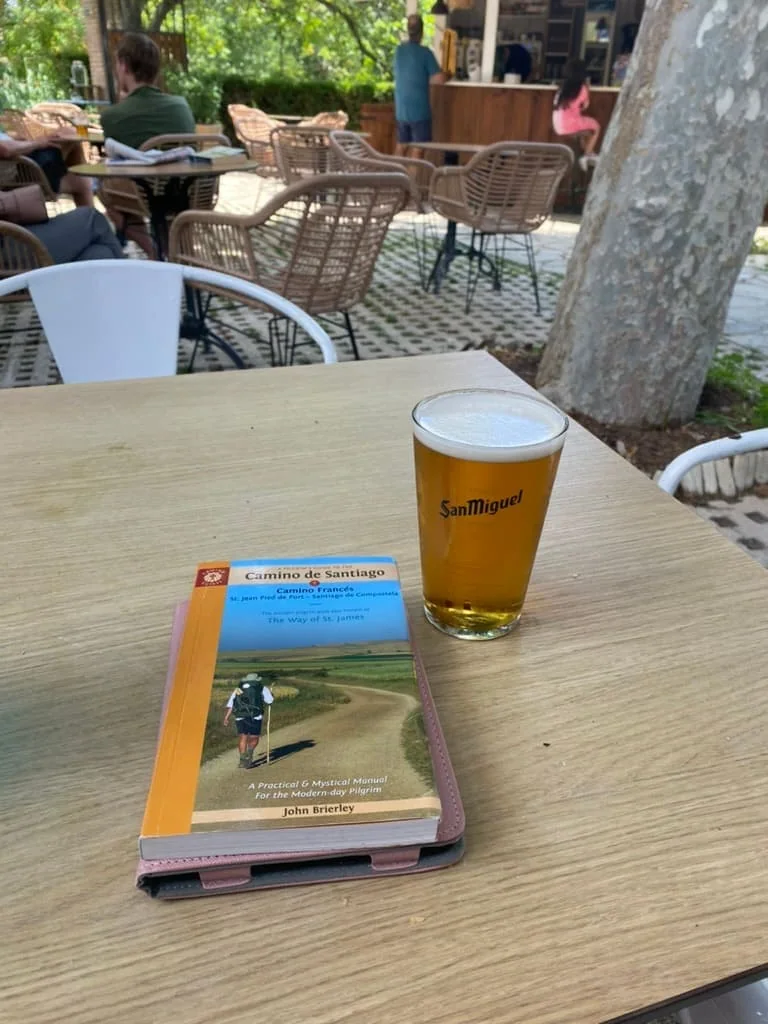
9. Carry a Camino guidebook.
In addition to an app, you should consider carrying a small guidebook. I carry a guidebook on all my Caminos and find it extremely helpful for more information about each destination, including where to stay, sights to see, and even history and legends.
Here are some of the top guidebooks for some of the most popular Camino de Santiago routes:
➡️ Buy Guidebook for the Camino Francés Here
➡️ Buy Guidebook for the Camino Portugués Here
➡️ Buy Guidebook for Starting in Sarria Here

Camino de Santiago Packing Tips
Packing is one of the most challenging parts of the Camino. This is where I recommend you spend most of your time researching and preparing.
And it's never too soon to start figuring out your packing list. The sooner you have it ready, the more time you have to purchase and test out gear. Plus, you may even be able to ask loved ones to get you some gear as a gift if you prep in time for your birthday or the holidays.
Here is my top advice for packing for the Camino de Santiago.
10. Heavily research your gear.
The number one thing you need to research before the Camino de Santiago is your gear. This is far more important than researching albergues or even prepping a loose itinerary.
With day after day of long hikes, your gear will make or break your experience. You want to make sure you are packing the right things and have gear that works for you. Check out my list of things to pack and packing tips, including advice for finding the right gear.
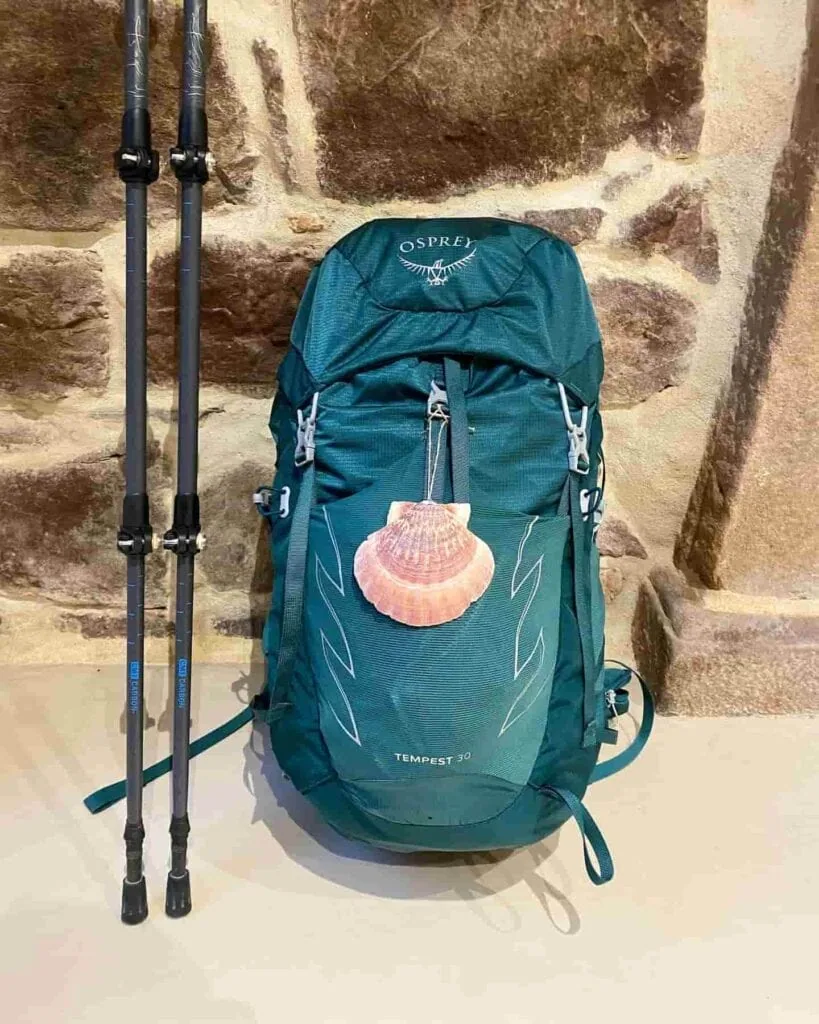
11. Find the right backpack for your Camino.
Your hiking pack is probably the single most important piece of gear to get right. Your back will hurt from carrying so much every day, but having the right pack will help make it more tolerable.
I personally used the Osprey Tempest Women's 30L backpack on all three of my Caminos. The latest version is now the Tempest 33L. I love this pack and highly recommend it.
I've found it fits everything perfectly and has a number of different compartments that help me stay organized and keep my most important items easily accessible.
Find the Right Backpack Size and Fit
Check out this guide and video from REI for help ensuring your pack size and fit is right. This is what I used to find the right pack for me before my Camino.
➡️ Click Here to Get the REI Pack Size and Fit Guide!
12. Test out all your gear before you leave.
Once you've found your gear, you will need to test it out and break it in to ensure everything fits well and won't lead to chafing or blisters after a long day of hiking.
Try out your gear in various temperatures and try to wear it as much as you can before you go to ensure it will work well.
If you aren't already, I highly recommend becoming an REI Co-Op Member so you have up to a year to return any used gear in case it doesn't work out.
➡️ Become an REI Co-Op Member Here

13. Break in your shoes ahead of time.
It's SO important to give yourself plenty of time to break your shoes in before you leave. Try to purchase your hiking shoes several months in advance just in case.
I made the mistake on my Camino of not giving myself enough time to break in my shoes. I had enough time to initially break in my shoes. The problem was that my shoes didn't work, and I ran out of time to test out a second pair.
That was a HUGE mistake on my end, and my feet ended up being miserable at the start of my Camino until I bought a new pair of hiking shoes, Hoka Speedgoats that saved my poor feet. These are now my go-to shoes on the Camino and I've hiked all three of my Caminos in them!
➡️ Check Out Hoka Speedgoats Here
➡️ Read my Full Review of Hiking Three Caminos in Hoka Speedgoats
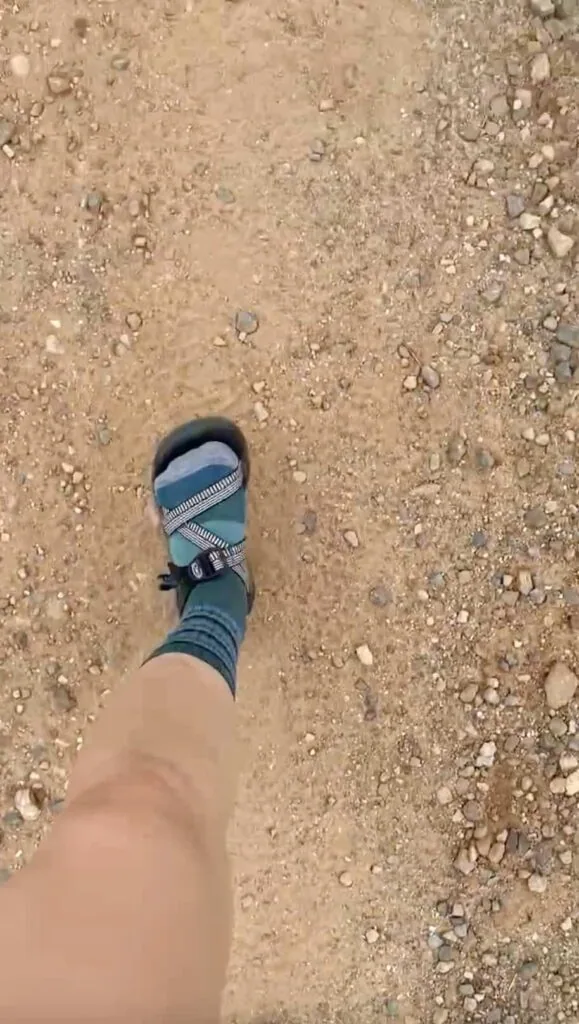
14. Bring a pair of hiking sandals.
You will want to bring a pair of hiking sandals for a few reasons. First off, they make for a great pair of shoes for wearing in town when you're not hiking. They let your feet breathe while giving your feet much-needed support.
Secondly, hiking sandals serve as a great backup hiking shoe in case you need them. I'm so glad I had a pair when my hiking boots weren't working out. I spent several days hiking in my sandals, and if I hadn't had them, I may not have been able to continue on.
15. Pack light.
They say you should only carry 10% of your body weight with you on the Camino de Santiago. While I would say that's somewhat of a good rule of thumb to attempt to follow, I'd say don't sweat it too much if you can't get your pack that light, especially if you're a small woman like me.
That said, you will want to make sure to pack as light as you possibly can on the Camino. Truly bring only what you need because the lighter your pack is, the easier it will be to hike with.
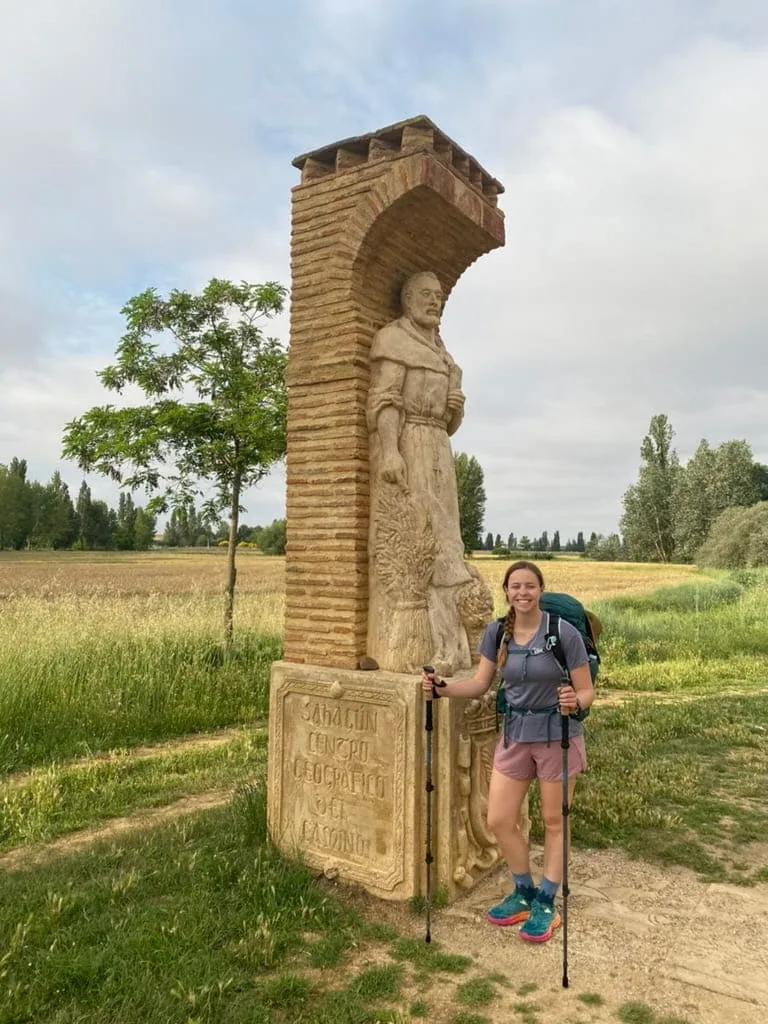
16. Use trekking poles.
You will absolutely want to use trekking poles on your Camino as they really help relieve some weight from your feet and give you some extra stability.
If you don't want to worry about packing trekking poles in your luggage, the major starting points along the Camino should have shops selling trekking poles. Saint-Jean-Pied-de-Port definitely has a shop selling them at various price points.
17. Prevent blisters with hiking sock liners.
Blisters tend to be inevitable on the Camino, so you want to do everything you can to try and prevent them. Wearing hiking sock liners can help as they reduce friction.
I personally used hiking sock liners and found them to help (once I found a good pair of shoes).

18. Bring Compeed bandages for when blisters inevitably appear.
Compeed bandages are a miracle when you get blisters on the Camino. They help protect the blister and reduce pain so you're not as miserable.
While you can find these for sale in shops along the Camino, I recommend carrying some with you as not every town will have them for sale.
I used these quite a bit, especially at the beginning of my first Camino when I had bad shoes and a ton of blisters. These are an absolute godsend, and I can't believe I had never heard of them before.
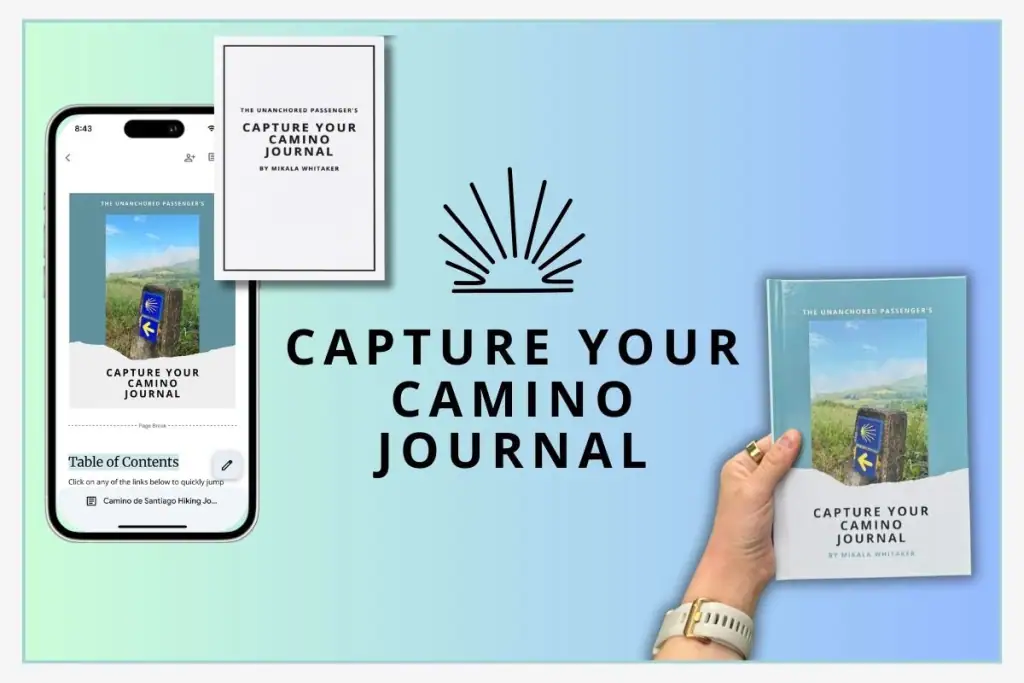
19. Bring a journal.
Whether it's a digital or physical journal, I highly recommend bringing a journal with you. The Camino de Santiago is a once-in-a-lifetime kind of adventure, and you'll want to keep a record of your experiences.
You'll especially want a journal if you're going on the Camino looking for some kind of transformational experience and opportunity for self-reflection. A journal can help you mentally prepare ahead of time and keep reflecting while on the trail and after your journey.
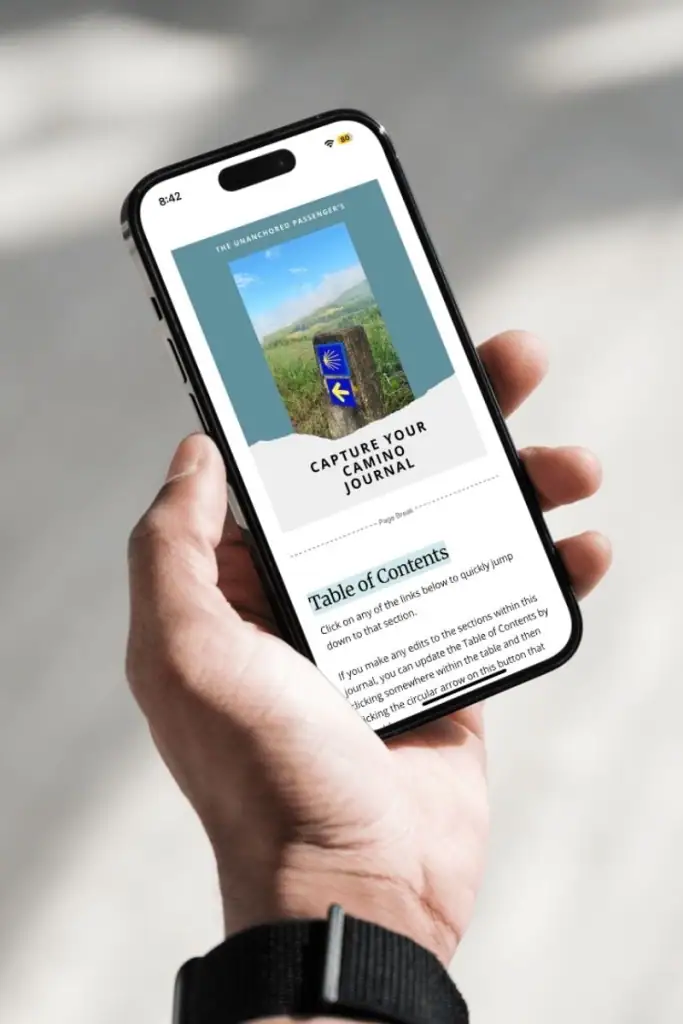
Capture Your Camino Journal
Do you feel stuck trying to figure out how to document your Camino memories in a way that will be meaningful, easy, and fast? I get it—that’s why I created Capture Your Camino Journal, available in mobile and hardback.
20. Pack a couple large black trash bags in case you encounter bed bugs.
Unfortunately, bed bugs can be an issue along the Camino de Santiago. I recommend bringing a couple big black trash bags with you in case you encounter them.
If you're potentially affected, you can put your hiking pack in the trash bag and leave it out in the hot sun for a few hours to hopefully kill off any bed bugs.
Accommodation Tips for Pilgrims
A large part of your Camino journey will be figuring out where to stay. Here are my Camino de Santiago tips when it comes to accommodations.
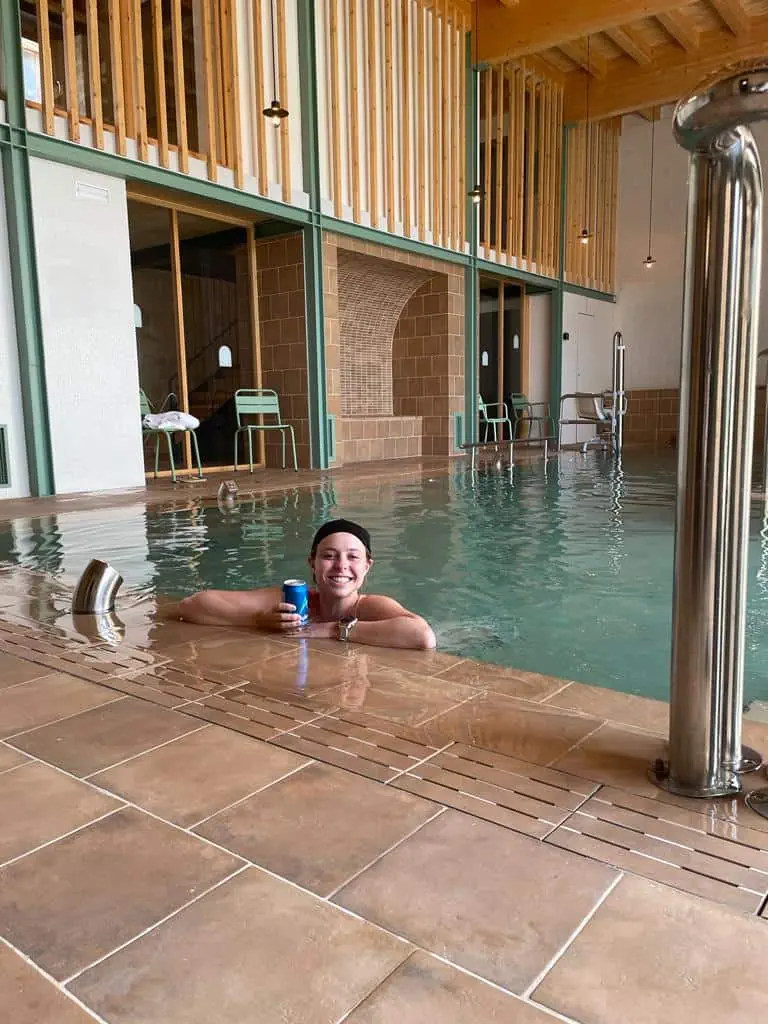
21. Do some light research into any cool or unique albergues to stay in.
You may want to do a little research into the albergues along your chosen route. Don't feel like you have to go overboard researching albergues everywhere, but it might help to get a sense of some of the coolest ones along the way.
I was surprised to find so many unique stays along the Camino Francés, and I really enjoyed a number of albergues. They're not all grimy with huge numbers of bunk beds crammed into a small space.
Some of my favorite albergues on the Camino Francés included one with singing nuns and another with a hydrotherapy spa. On the Portugués, some of my favorites included an over 1,000 year old monastery and one with a nightly pilgrim dinner.
Read More About My Favorite Albergues on the:
➡️ Camino Francés
➡️ Camino Portugués (Central and Coastal)

22. Understand the kinds of albergues you want to stay in.
As you research, you'll find there are many kinds of albergues to stay in on the Camino. Learn more about the different kinds of albergues and figure out which might be best for you depending on your budget and the experience you're looking for.
I primarily stayed in municipal and private albergues. I was trying to save money and didn't mind staying in a group bunk room with other pilgrims.
The municipal albergues are usually the cheapest and most bare bones, while the private albergues tend to be a bit nicer and sometimes have amenities like pools and kitchens serving meals.

23. Stay flexible in your plans.
You never know what each day might bring you, so don't book ALL of your accommodations in advance. If you don't want to stress about finding a bed, it's ok if you want to book the next few days in advance, but don't book your whole trip.
You'll want flexibility in case you want to adjust your plans after making friends or if your body is telling you to take an extra rest day.
Personally, I hiked most days along the Camino Francés in June without booking in advance. I booked Orisson in advance as it's small and fills up very quickly. I also booked from Sarria onwards in advance since it can get quite crowded.
The only other times I booked in advance on the French Way were when I found very special albergues I wanted to stay in. Otherwise, I had no issues arriving the day of and finding a place to sleep. The only town that some of my friends had an issue in was Agés.
On the Camino Portugués routes, I found myself booking in advance a bit more than on the Francés. This was because there are fewer albergues on those routes and they tend to be smaller. May tends to be a busier time on those routes, so I felt a bit more nervous so booked ahead when I wasn't planning to stay in a municipal albergue.
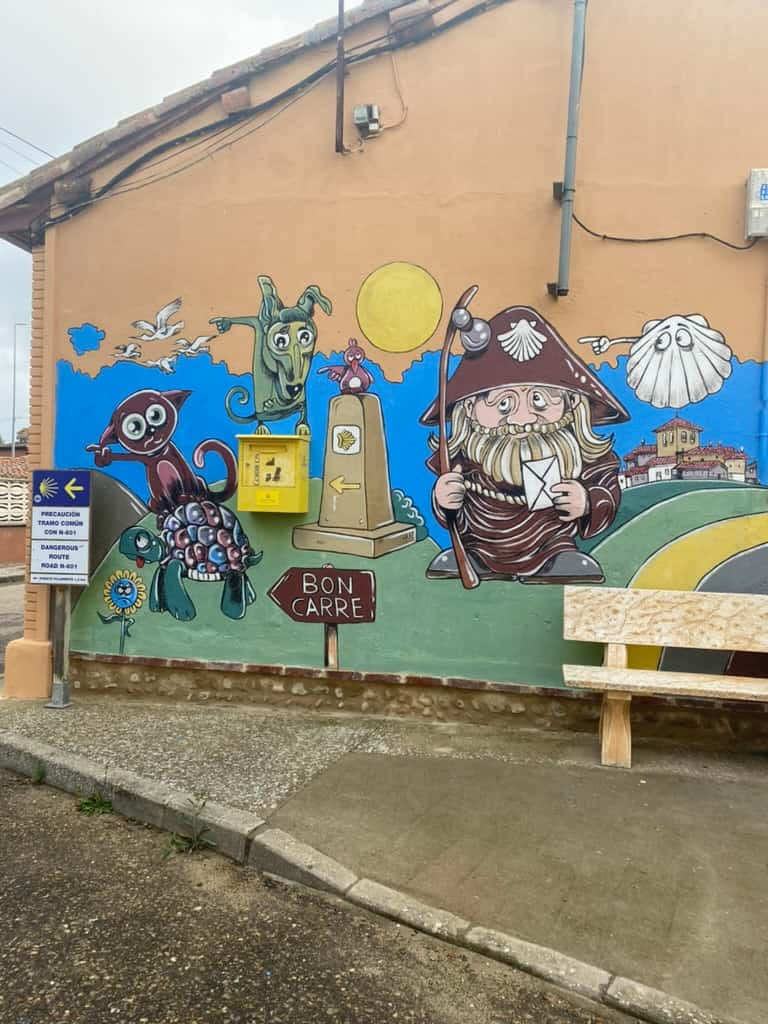
24. Have a backup plan each day while you walk.
One of my biggest Camino de Santiago tips is to have a backup plan each day. Make sure you know the towns along the way and just after where you're planning to stop just in case.
You never know if you suddenly start feeling tired or something happens and you need to stop sooner. Or if a town is full, you'll need to be prepared to hike or bus to the next town or so to find lodging.
25. Consider splurging once or twice on a private room.
I primarily stayed in albergues with large rooms full of bunk beds with other pilgrims. I loved it and it wasn't too bad since we were all doing the same thing.
That said, you may want to consider splurging a few times on a private room, especially if you take a rest day. It's such a treat to get a room to yourself. The peace and quiet can really help rejuvenate you.
I got my own room when I took a rest day in León. It was incredible being able to sleep as late as I wanted without getting bothered from anyone else and to have a bathroom all to myself.
I definitely recommend getting your own room for your rest day(s) for this reason. If it helps you out, feel free to get a private room more often though!

26. Stay at a Parador Hotel if you’re feeling bougie.
To REALLY treat yourself, consider staying at a Parador Hotel during your Camino. There is one in Santiago de Compostela and several along the other Camino routes as well.
The Parador in Santiago de Compostela is considered the oldest most luxurious hotel in Spain and was built centuries ago as a pilgrim hospital. I stayed there at the end of my Camino, and it was the best way to really make the end to my journey all the more special.

27. Consider when you may need to book an albergue a few days in advance.
There are a few scenarios where I recommend booking your albergue a few days ahead of time:
- If you have a very long day of hiking and don't want to risk not getting a bed, especially if you think you'll arrive later in the day
- If you're hiking a particularly busy stretch of the Camino at a busy time of year (example: between Sarria and Santiago de Compostela)
- If you want to make sure you can stay at a special albergue that you've found
- If you seem to be in a bigger wave of Camino hikers and finding accommodations is continuously challenging
At least for me, a nice part of the Camino has been challenging my very typical Type A self to stay flexible and go with the flow. It's helped push me to be more relaxed, and I really appreciated that experience.
That said, I'm not going to lie and say it hasn't been stressful at times wondering if I would get a bed or not. In the end, it all worked out for me, but there are times when that extra piece of mind can help you enjoy the experience more.
My advice for the Camino de Santiago is to strike a balance between staying flexible and making bookings when it’s practical or necessary. Embrace spontaneity, but don’t hesitate to reserve a spot when it feels right for you.

28. Stay off stage, especially for busier routes.
To help avoid crowds, it also helps to stay off stage. Off stage means staying in towns along the way that aren't places recommended for spending the night in most of the guidebooks.
I personally did this after reaching Sarria and am so glad I did. Many people hiking the Camino Francés complain about how crowded the trail gets after you reach Sarria, but I didn't experience this at all since I stayed in less common spots along the way.
I was still able to see many of my friends, but staying off stage made it so I didn't have to stress so much about crowded trails and albergues.
Health and Safety Advice for the Camino
Undergoing any physical challenge like the Camino means you have to take utmost care of your body and be prepared if anything happens. You also want to stay safe on the journey.
Here are my health and safety tips for the Camino de Santiago.

29. Get travel health insurance.
Spain is recommending all non-EU visitors to have travel health insurance. There were rumors Spain might start fining tourists who didn't have insurance, but those have since been debunked.
Maybe it’s the American in me, but I always feel like it’s a good idea to have travel health insurance anyways, especially whenever you’re doing something more physical like the Camino.
You never know what might happen. While it's not super common, people do injure themselves on the Camino and need to seek out medical attention.
One of my friends had to jump out of the way of an out of control car on her first Camino and ended up breaking her cheekbone. She had to have surgery and stay in a hospital for a few days. Fortunately, she had travel health insurance and didn't have to pay much.
I'm not saying this to scare you, and incidents like this aren't very common. But you never know. Especially when you're doing something physical like this, it can be a good idea to have coverage in case you need it.
I use World Nomads insurance. World Nomads offers coverage for more than 150 adventure activities as well as emergency medical, lost luggage, trip cancellation and more.
➡️ Check Out World Nomads Insurance Here.
As an affiliate, I receive a fee when you get a quote from World Nomads using this link. I do not represent World Nomads. This is information only and not a recommendation to buy travel insurance.
30. Download the Alertcops app.
The Spanish government created the Alertcops app that helps make it easy in case you need to report anything to the Spanish police. As a solo female, I felt quite safe on the Camino, but you want to be prepared in case.
The app allows you to chat with the police in English, report crimes, and even hit an SOS button in an emergency.
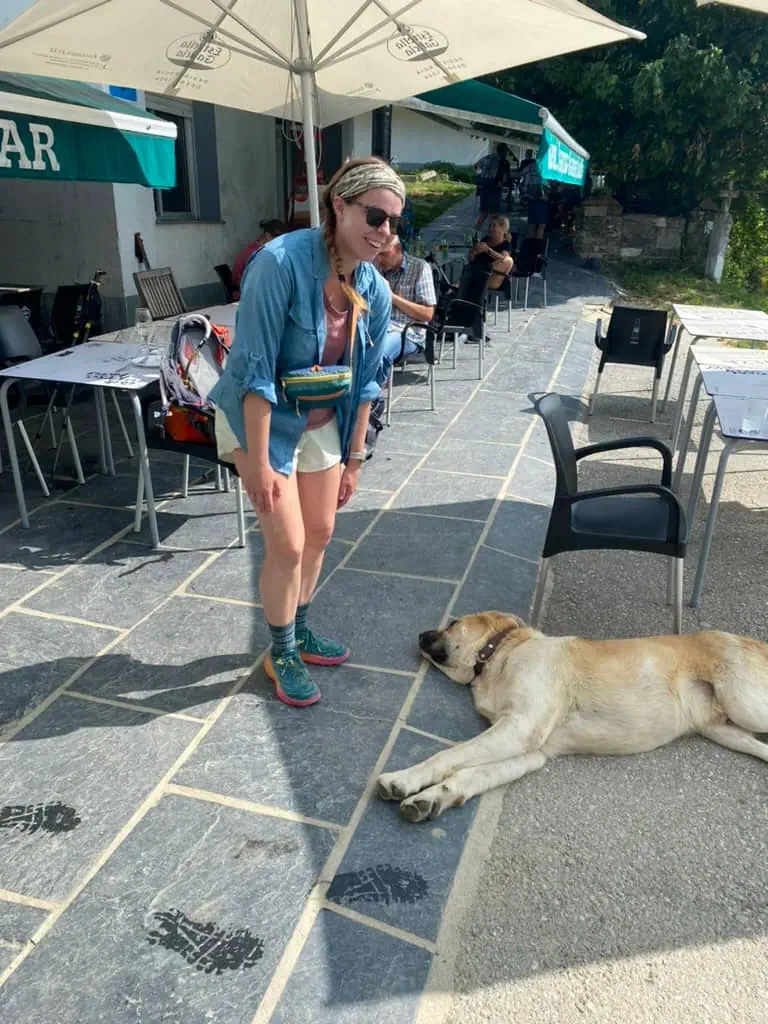
31. Keep your valuables on you at all times in a fanny pack.
The biggest risk on the Camino is petty theft. For that reason, you want to keep your most valuable items–phone, passport, and wallet–on you at all times.
I recommend carrying these items in a fanny pack so they're easy to keep close. Carry the fanny pack with you everywhere. You'll even want to bring it with you when you shower and keep it deep in your sleeping bag liner when you sleep.
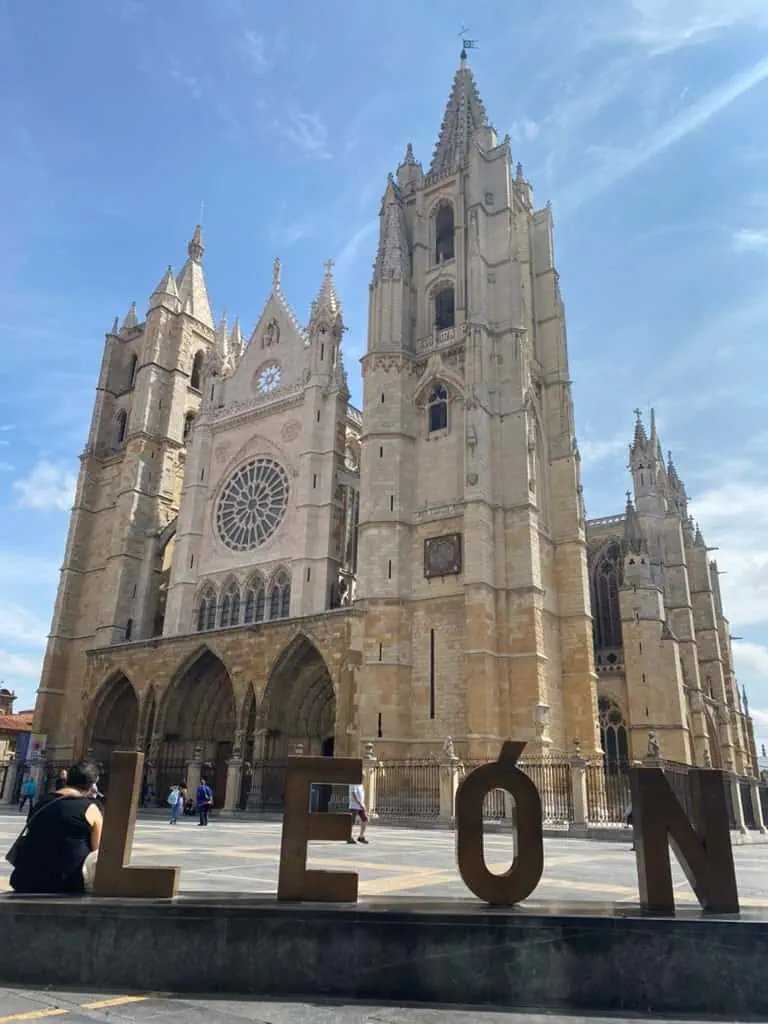
32. Plan to take a rest day if you’re hiking for more than a week or two.
Your body will need a rest day, so make sure you give yourself time to take at least one or more.
I personally took one rest day over my 33-day journey along the Camino Francés. I wish I had been able to take at least one more rest day, but I was tight on time so only had room to take one.
I had some friends who didn't have time to stop their journeys but needed a rest day, so they would bus to the next destination instead of hiking. That's something you can consider if you need it.
33. Listen to your body and change your plans if needed.
You'll really want to listen to your body and let it guide you along your Camino de Santiago. If your body is really hurting, consider taking an extra rest day, having a shorter hiking day, or taking a bus to your next destination.
Hiking the Camino de Santiago is truly a marathon, not a sprint, so you need to do everything you can to take care of your body along the way so you can finish.
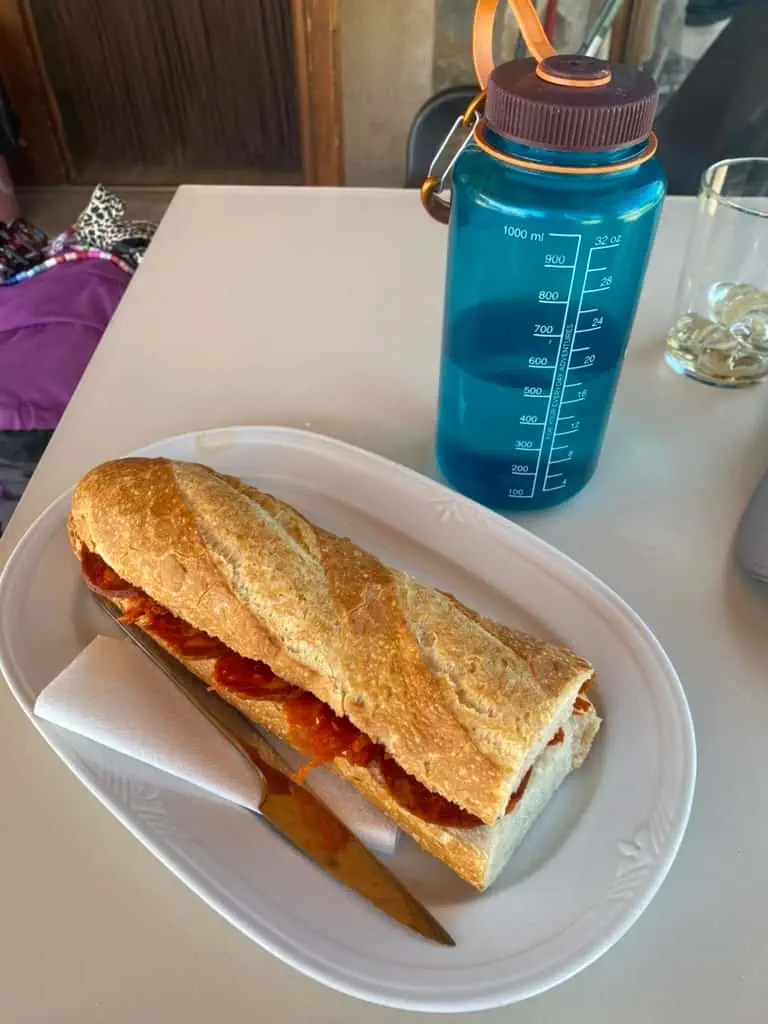
34. Take many breaks during your hikes.
During your hikes each day, be sure to take plenty of breaks. Even if you don't think you'll need so many breaks, it's a good idea to take them every so often.
I made the mistake of rushing through the first few days of my Camino without taking many breaks. My body was so fatigued and in so much pain because of it. That fatigue and pain forced me to take more breaks during the rest of my journey, and I started feeling better once I did.
Usually whenever I reached a town, I would take a break even if it was just to get a sports drink or a quick snack.
35. Rest after you get to the albergue.
As soon as you get to the albergue and shower and do your laundry, give your body time to rest. You'll need it. I recommend trying to nap if you can, but if you can't, any time spent resting in bed will help.
I usually slept for one to three hours in the afternoons and sometimes did some reading too. The constant hiking day after day really took a toll on my body. I needed all the extra rest I could get.

36. Make sure to carry plenty of water.
Some days on the Camino de Santiago can be quite hot, especially if you're hiking in warmer months. It's so important to carry enough water with you each day so you can stay hydrated and safe on the trail.
Some days will provide plenty of opportunities for getting water in towns along the way, but not always. Be sure you know how many towns are on the way and plan to stock up on extra water beforehand if needed on days when there are fewer stops.
37. Be careful in the sun.
You'll likely be hiking during some of the hottest times of the day when the sun is strongest. Be sure to wear sunscreen and cover your skin as best as you can.
I personally recommend this hat, Buff, and sun shirt to help protect your skin. I wore these (or similar) items on my own Camino and they were so helpful.
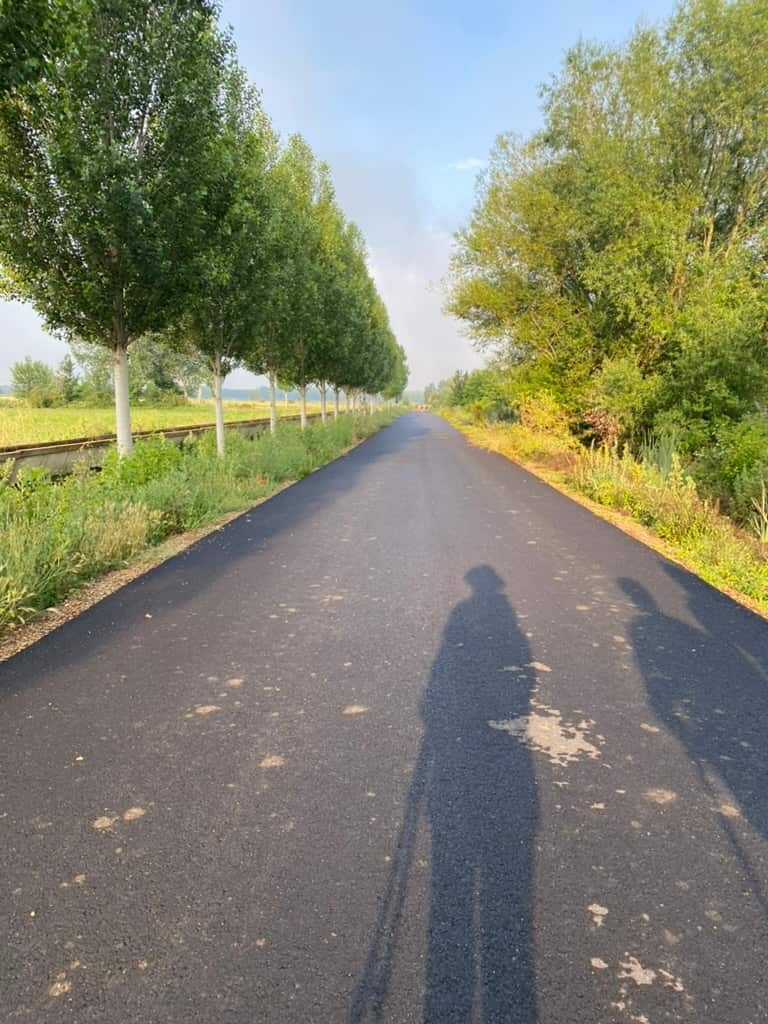
38. Stay alert and be careful hiking along roads.
Some portions of the Camino de Santiago involve walking alongside roads. They're usually fairly quiet, but you will want to stay alert and be careful just in case.
I had one friend who had to jump out of the way of an out-of-control car on her first Camino. You just never know what might happen on a road.
39. Consider using luggage transfer services when needed.
If your body is feeling particularly sore and tired, you might consider giving yourself a break from your pack one day.
There are services all along the Camino where you can pay a small fee to a company for them to pick up your bag and drop it off at your next destination later that day.
I didn't try this myself, but plenty of my friends used the service. It's a great way to help your body out without taking a full on rest day if you don't have the time.

40. Fuel your body well.
You will want to eat well and often on the Camino. Hiking the Camino is not the time for dieting. Give your body the fuel that it needs to succeed.
This might mean eating lots snacks, second breakfast, and a big dinner. There were plenty of days where I set out hiking quite early, ate a croissant and then felt hungry a bit later and stopped for more food.
I typically carried at least one banana and my favorite Spanish chocolate cookies with me. That way I had some snacks if needed along the way in between towns.
I'll add that electrolytes are so important too, especially for hot days. You can try the sports drink called Aquarius or bring your own electrolyte supplement. I personally love Nuun Sport and use it for my marathon training–the pink lemonade flavor is my favorite.
Overall, you really want to listen to your body and feed it what it needs to succeed!
Additional Camino de Santiago Tips
I have so many tips from my time on the Camino de Santiago. They can't all be categorized, but here is some additional advice to keep in mind while you're on the trail.
41. Carry the right amount of cash on you.
Most stops on the Camino de Santiago take cash only. Plus, not every town will have an ATM.
Keep this in mind and ensure you're prepared with more enough cash for several days until you reach an ATM again. I usually recommend carrying around 200-300 euros at a time.

42. Start hiking early each day.
Setting out early each day has numerous benefits:
- You will have a higher likelihood of finding a bed at your next destination without booking in advance
- Your clothes will have more time to dry outside in the sun after you wash them
- You'll avoid some of the heat of the day
- You will have more time to rest and also explore your next destination
On an average day on the Camino for me, I would usually wake up and leave around 6 a.m. On longer hiking days or hotter days, I would usually bump that up an hour to 5 a.m.
43. Enjoy meeting others but take time to appreciate the solitude as well.
Making friends on the Camino de Santiago is one of the best parts but so is getting the time and space to think to yourself. Be sure to spend at least some time alone reflecting on life and where you want to go next.
Especially after making close friends on my journey, I would often hike with them. We would spend time talking, but we would also spend time in silence together too. That's something you might consider if you find a group you want to stick with but still want some alone time.

44. If you want an alcoholic beverage, try tinto de verano.
Surely you've heard of sangria, but have you heard of tinto de verano? I think of it as sangria's little cousin. It's usually a mix of red wine and lemon soda.
Tinto de verano is often more popular among Spanish locals than sangria, and I can see why. After a long day of hiking in the heat, a glass of tinto de verano really hits the spot. It's so refreshing, and the low alcohol content is helpful when your body needs to stay hydrated.
I am a big fan of tinto de verano and drank it just about every day on my Caminos while in Spain…

45. Don't forget to be a tourist on your Camino de Santiago.
There are so many unique sights along each Camino route. Do some research in your guidebook and apps and don't forget to check them out on your way.
For instance, on the French Way I really enjoyed seeing the cathedral in Burgos, the Palace of Gaudí in Astorga, and a Knight's Templar Castle in Ponferrada. I even saw some old Roman ruins along the trail one day.
On the Portuguese routes, some of my favorite stops included exploring a medieval fortress in Valença, Portugal; walking around another medieval fortress in Baiona, Spain; and taking in the ocean views all along the Coastal route.

46. Don’t overdo it getting stamps in your passport each day.
You'll want to get stamps all along your journey but don't go over the top with stamps or you may run out of room in your pilgrim passport.
I recommend getting at least one each day and then getting additional stamps whenever you see something special and it feels right. Once you get to the last 100 km of your hike, you will need to get two per day if you want to get a Compostela Certificate at the end.
I got a stamp at my albergue each day (this is pretty standard) and then would get additional stamps every so often to remember a special location I visited or even if I just thought the stamp was cool.
Some of my favorite stamps from my first Camino are from a random lemonade stand I visited on the side of the road and from the Burgos post office.

47. Show respect to fellow pilgrims, locals, and the trail.
Last but not least, be sure to show respect to others along your journey. Greet fellow pilgrims with a “Buen Camino” and approach interactions with locals with patience and kindness.
Take care of the trail by carrying out all your trash and avoiding disturbing the environment. In albergues, be mindful of others by following the rules, keeping noise to a minimum, and respecting quiet hours.
And be sure to look out for your fellow pilgrims. If you see someone who seems lost or in need of water, food, or support, don’t hesitate to lend a hand. The Camino is a shared journey, and we’re all in it together.
Conclusion: Camino de Santiago Tips
There you have it! Those are my top Camino de Santiago tips and advice based on my own experience hiking. I hope you find this helpful as you prepare for your journey and wish you all the best!
Next: Understand Camino de Santiago Mistakes to Avoid
I myself have made some big mistakes, especially on my first Camino. So have other pilgrims I've known. Next, read my article on some of the top mistakes to avoid so you can feel even more confident going into your Camino.



